One of the ways to attract butterflies to your yard is to create the ideal butterfly garden. Some gardeners simply plant beautiful perennials that attract butterflies and hope for the best.
While the plants attract some butterflies, with just a little extra effort, you can create a butterfly sanctuary rather than just a feeding ground. When you create a butterfly sanctuary versus a food garden, provide them with a place to grow, eat, and multiply.
Building a butterfly sanctuary involves more than just picking a handful of plants with showy flowers to attract them. You must first pick out the perfect location for your garden. Your garden location must shelter butterflies from the elements.
Perfectly placed trees and shrubs protect from harsh winds, making it easier for butterflies to flutter about. They also protect from predators as it offers them places to hide and rest.
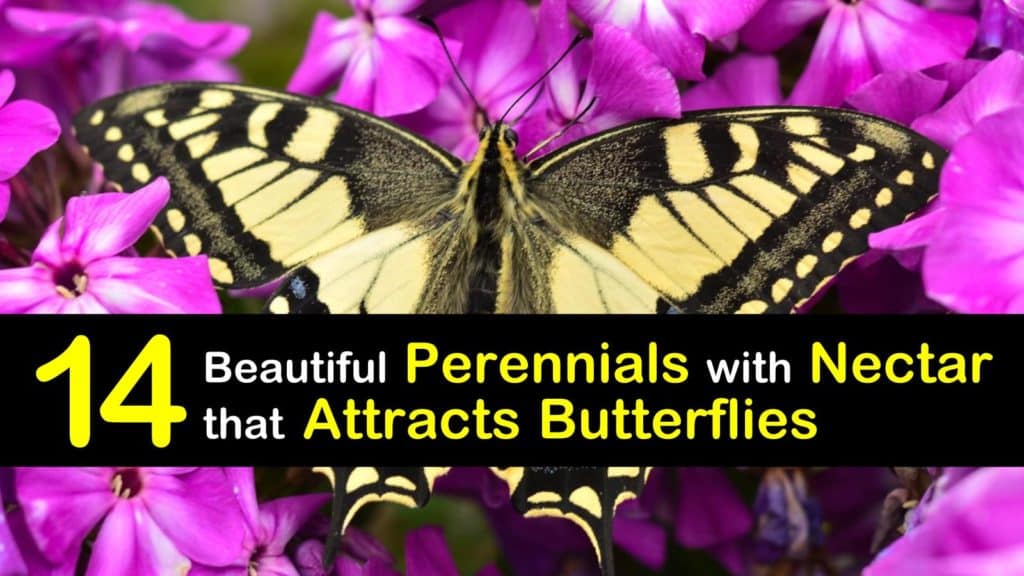
- Tips for Planting the Ideal Butterfly Garden
- Beautiful Perennials that Attract Butterflies and Other Pollinators
- Perennials that Attract Butterflies – Purple Coneflower (Echinacea purpurea)
- Butterfly Bush (Buddleia davidii)
- Aster (Astereae)
- Orange Milkweed (Asclepias tuberosa) – Butterfly Attracting Perennials
- Tickseed (Coreopsis)
- Salvia (Salvia officinalis)
- Best Perennials that Attract Butterflies – Garden Phlox (Phlox paniculata)
- Joe Pye Weed (Eutrochium purpureum)
- Bee Balm (Monarda didyma)
- Goldenrod (Solidago canadensis) – Perennials for Attracting Butterflies
- Stonecrop (Sedum)
- Black-Eyed Susan (Rudbeckia hirta)
- Best Perennials that Attract Butterflies – Zinnias (Zinnia elegans)
- Blazing Stars (Liatris)
Tips for Planting the Ideal Butterfly Garden
When creating the ideal butterfly garden, one of the most overlooked things is host plants. Many people disregard them because they don’t know what they are, but that doesn’t change their importance.
Host plants are like nurseries for your butterfly garden. These plants are where the female butterfly lays her eggs. Most of the time, eggs are laid on the underside of leaves to protect them from predators, but females sometimes lay them on the top.
Females choose these host plants because, after their eggs hatch, the larvae have an instant food source. The preferred host plant varies depending on the species but ranges from flowers like Orange Milkweed and Tall Verbena to herbs and grasses.
Nectar plants are also necessary for butterfly gardens, but these plants don’t provide food for caterpillars. Nectar plants are used solely to attract butterflies and are often labeled in nurseries as butterfly friendly.
Most of these plants offer bright blooms that draw in the butterflies, but not all nectar plants are created equal. The best nectar plants for your butterfly garden depend on your growing zone.
Additionally, the best nectar plants for attracting butterflies vary by location, so do some research before making any purchases. The most dependable way to know what plants work best in your area is to visit local butterfly gardens or by talking to butterfly gardeners from your area.
If neither of those is a viable option, read through some butterfly books to discover the best food choices for the types of butterflies local to your area.
Beautiful Perennials that Attract Butterflies and Other Pollinators
Perennials such as Lantana, Yarrow, and Allium are just the beginnings of a butterfly garden. Make sure to include a diverse number of shrubs, trees, and vines, as well as annuals that attract pollinators, as well. Include differing heights, bloom times, and flower shapes to provide as varied a garden as possible.

Perennials that Attract Butterflies – Purple Coneflower (Echinacea purpurea)
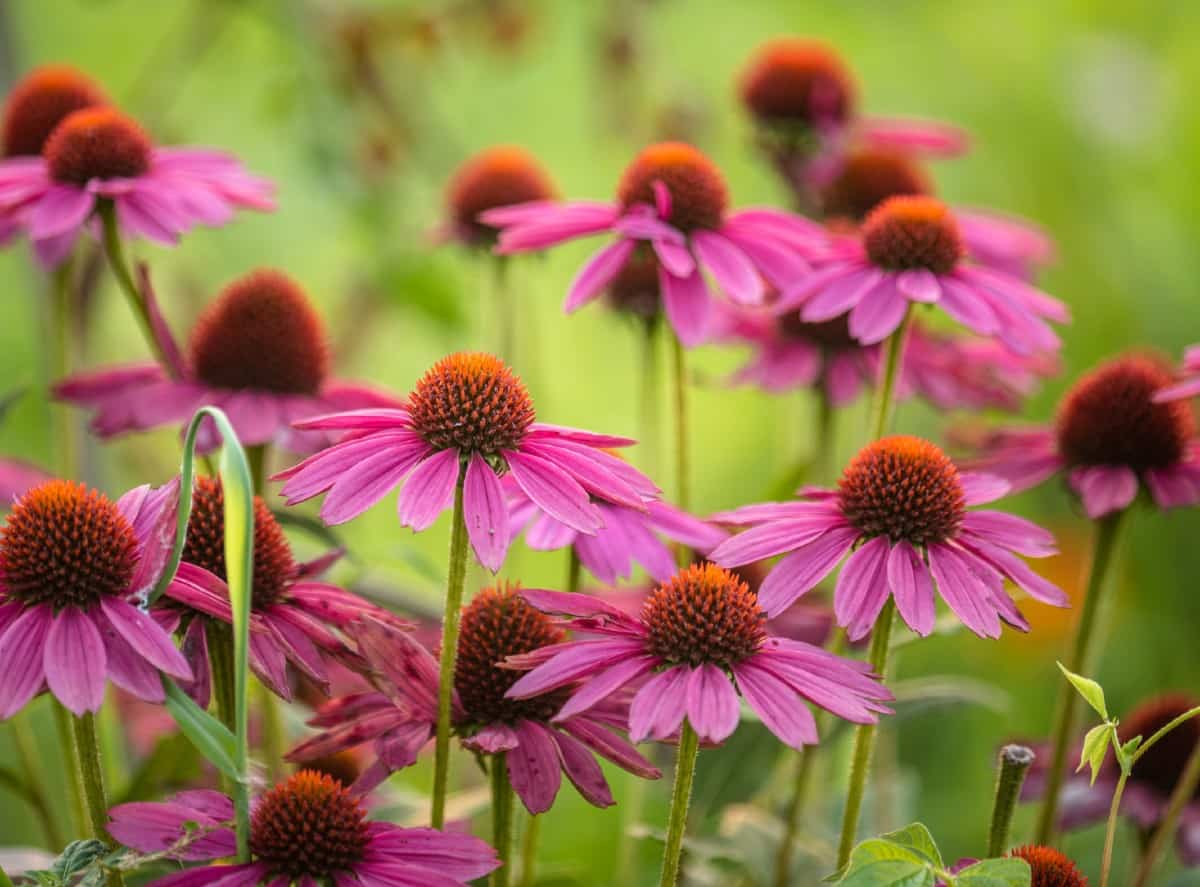
Coneflower offers brilliant purple flowers that gardeners and pollinators both enjoy. The flower heads not only draw in pollinators such as butterflies, but they attract a variety of birds, too.
The stalks of the Coneflower grow up to three feet tall, so they work best when placed towards the middle of a butterfly garden. To ensure optimal blooming and growth, plant Coneflower in organically fertile soil; amend with organic compost if necessary.
Coneflower adapts to various climates and, once fully established, is both drought and heat tolerant. Blooms first appear in the early summer and continue until the fall.
Butterfly Bush (Buddleia davidii)
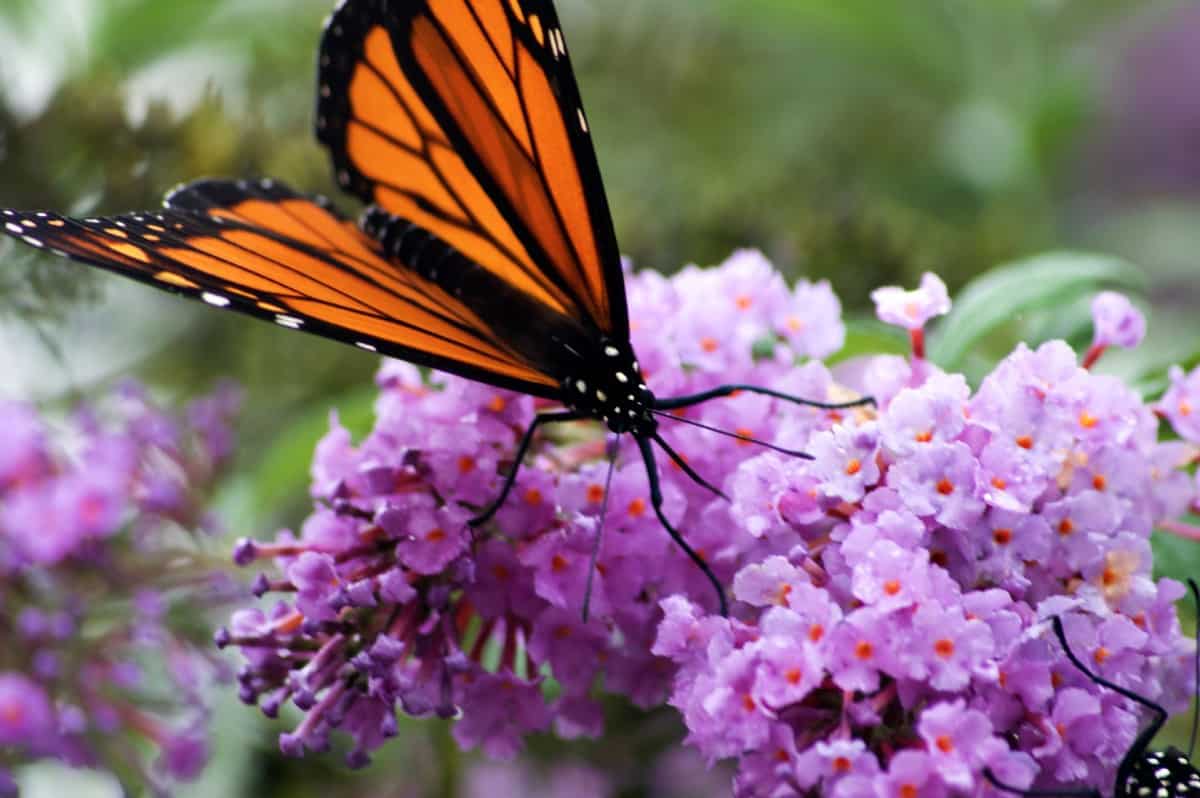
As the name suggests, Butterfly Bush attracts butterflies but also has flowers bees love, and that hummingbirds and other pollinators enjoy, too. This beautiful perennial produces the most stunning flower spikes in a variety of colors, including pink, blue and multi-colored.
Seedless varieties reduce the risk of the plant taking over. Some types of the Butterfly Bush grow up to 12 feet tall, but others are much smaller.
These low-maintenance perennials seem to thrive under the worst conditions and are naturally resistant to a variety of ailments, including drought, insects, and stress.
Aster (Astereae)
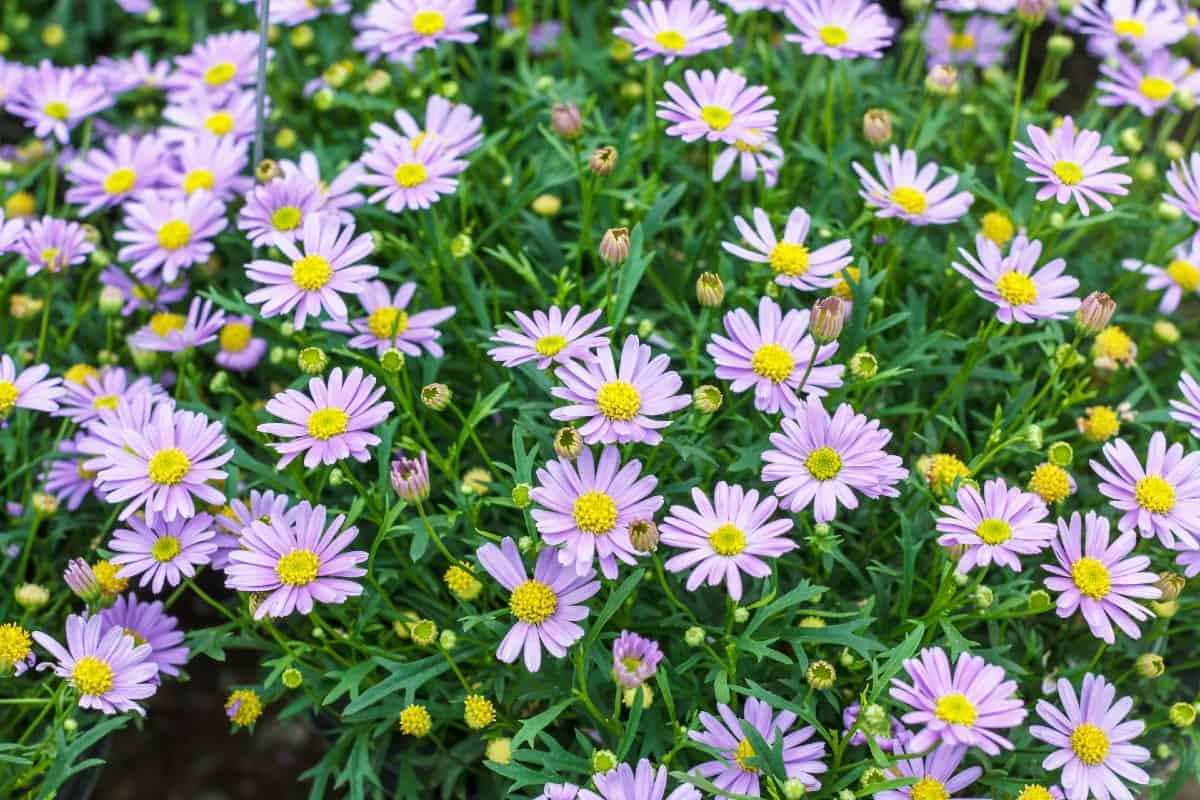
If you want to bring butterflies to your yard, consider planting Asters. The small feathery flowers of the Aster come in a variety of colors and bloom from summer until the fall.
Leave withered stalks for much-needed texture in the barren months or prune back after flowering finishes. Choose a planting location for asters that provides full sun and well-draining soil.
Add a few inches of mulch to your flower beds to help the ground stay moist, as Asters don’t do well in dry conditions. Asters grow up to six feet tall, so plant towards the back of gardens.
Orange Milkweed (Asclepias tuberosa) – Butterfly Attracting Perennials
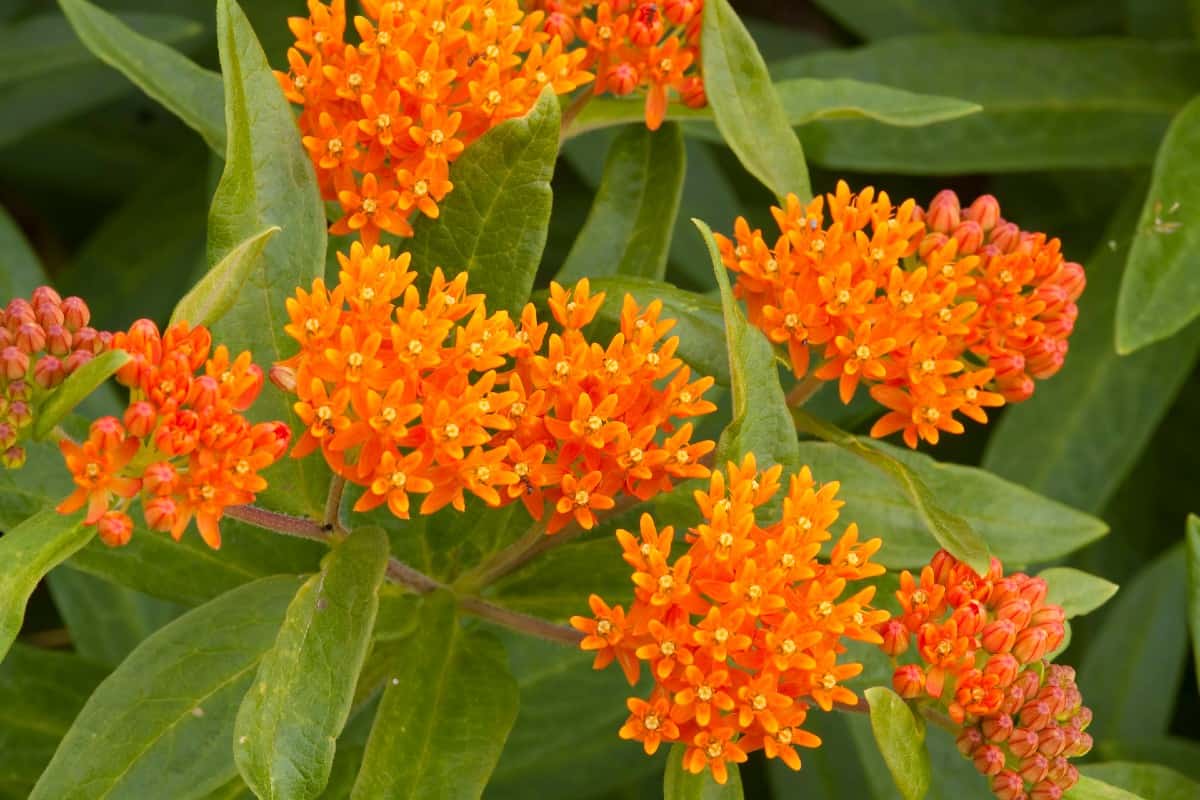
Milkweed, also known as Butterfly Weed, is the food source for caterpillars that turn into Monarch butterflies. Despite its name and the fact that they are host plants to bring butterflies like the Monarch, butterflies are not the only thing it attracts, as ladybugs, bees, and other helpful insects enjoy it as well.
The flat clusters of orange flowers bloom from early in the summer until the first frost. This is a frequent choice for butterfly gardens, as it’s drought-tolerant, so it does well in the drier spots.
The only requirement for growing Orange Milkweed is to choose a location that provides eight hours of direct sunlight.
Tickseed (Coreopsis)
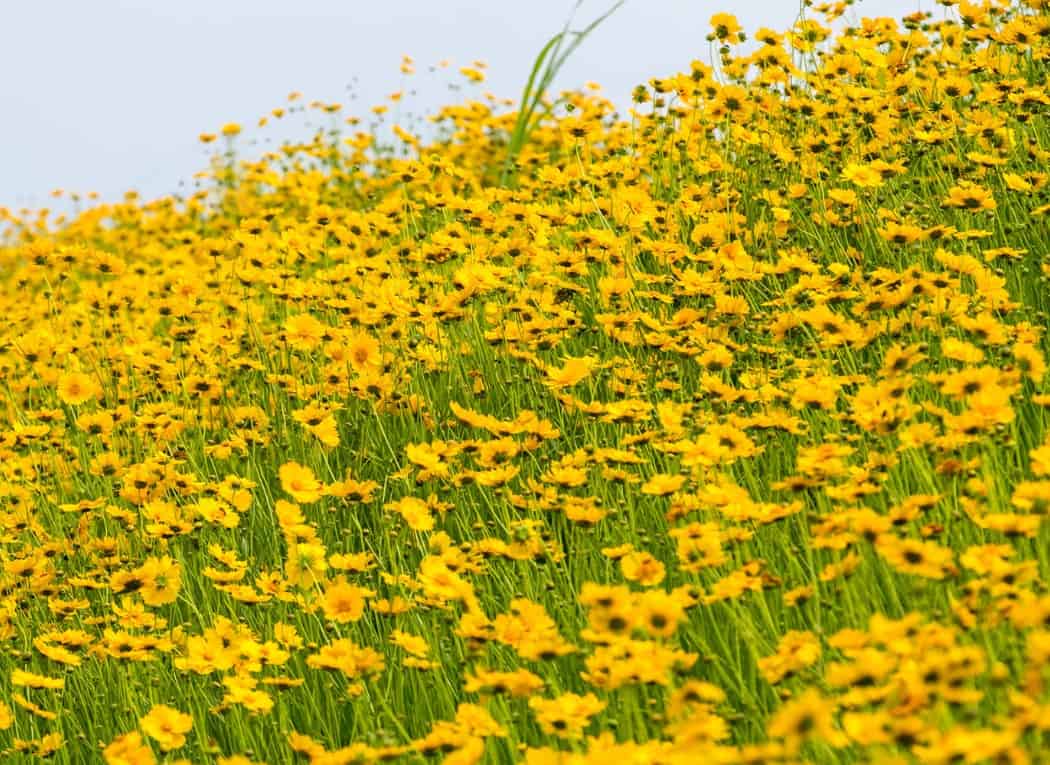
Two of the most popular choices of Tickseed are Moonbeam and perennial. Gardeners enjoy Moonbeam for the showy flowers that begin appearing in the late spring and remain throughout the summer.
Perennial Tickseed is a low-maintenance option with yellow-orange flowers that bloom from May through July.
No matter which of the perennial flowers that bloom in summer you choose, find a planting location with full sun and well-draining soil. Both types do well at attracting butterflies and other beneficial insects and thrive in diverse soil conditions.
Salvia (Salvia officinalis)
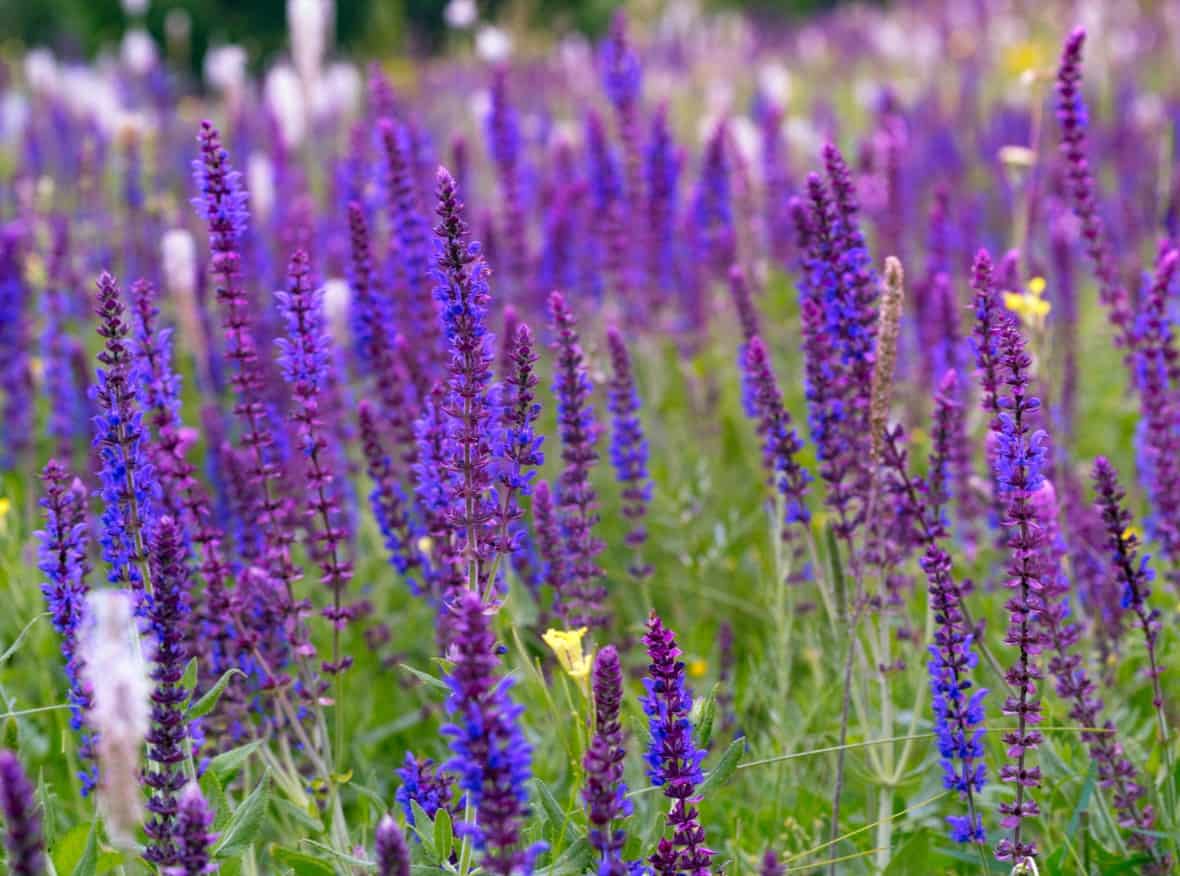
Salvia also referred to as Sage, is one of the most useful and aromatic plants around. The sun-loving Salvia plant blooms from summer throughout the entire fall. Lovely to humans, Salvia are flowers attracting hummingbirds, butterflies, bees, and other helpful insects.
The plant is a member of the mint family, is edible, and is often used in cooking. When planting Salvia, find a spot that provides a lot of direct sunlight and well-draining soil.
Do not overwater Salvia, as it causes the plant to wither and die. The tubular blossoms sit on top of the square stems. The odor emitted from the green leaves naturally repels various garden pests.
Best Perennials that Attract Butterflies – Garden Phlox (Phlox paniculata)
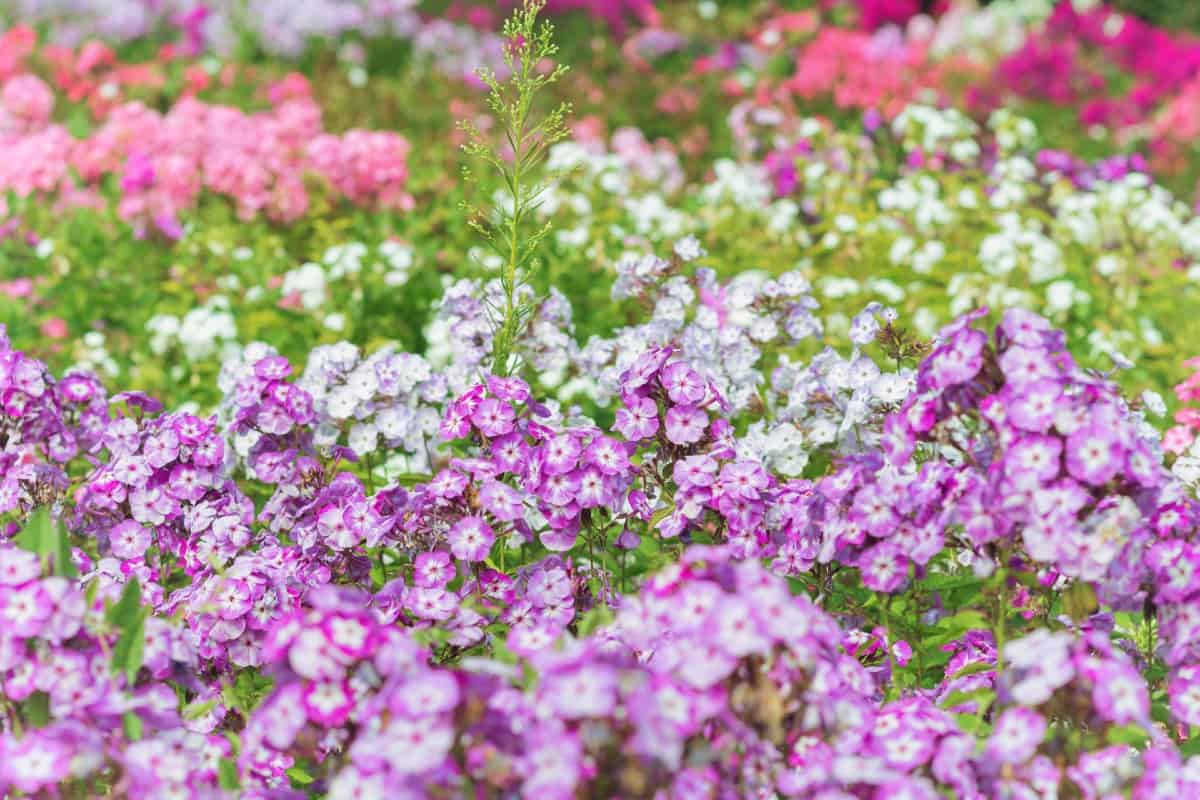
Garden Phlox is an excellent choice for many gardens as it offers a long blooming period. The slender blooms from Garden Phlox come in a variety of colors, including rare blue ones.
Bloom time for Garden Phlox extends from early in the summer until the beginning of fall. As Garden Phlox grows up to five feet tall, choose planting locations in the middle or towards the back.
Look for spots where these long blooming perennials receive full sun, although they adapt well to partial shade. Always amend your soil before planting Garden Phlox and use well-draining soil.
Joe Pye Weed (Eutrochium purpureum)
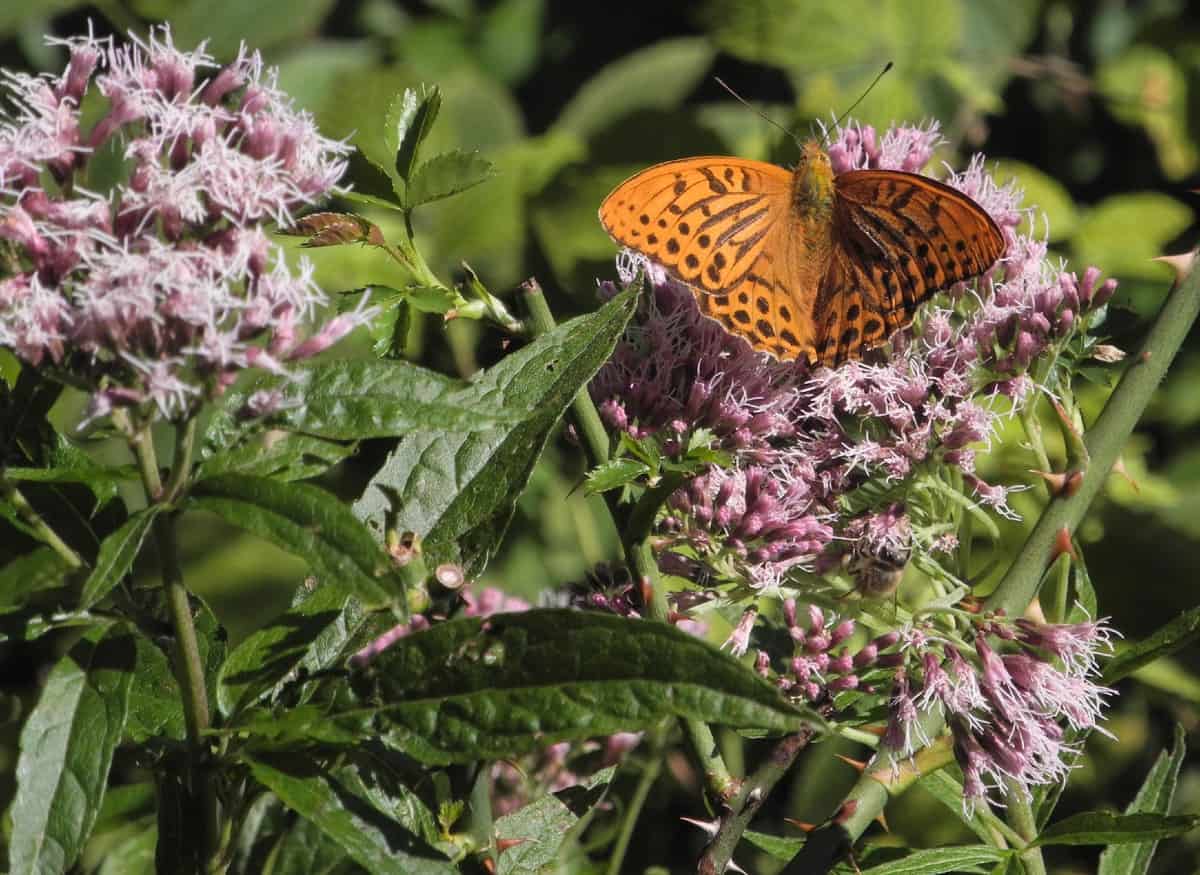
Add Joe Pye Weed to your butterfly garden to help attract butterflies later in the season. A late bloomer, Joe Pye Weed flowers from late summer until the early fall. The plant reaches up to seven feet tall and four feet wide once mature.
The tubular-shaped flowers are known for their sweet nectar. When selecting a planting location for Joe Pye Weed, light is the biggest concern.
Typically, this nectar plant grows best in partial shade as it requires evenly moist soil. If growing in the full sun, make sure to keep the soil moist, as hot and dry conditions kill it.
Bee Balm (Monarda didyma)

Bee Balm features bright, colorful flowers that attract a variety of butterflies and other pollinators. The flowers of this plant begin blooming in the early spring and continue to appear until fall, giving it one of the longest blooming periods.
When selecting a spot for Bee Balm, keep it in the middle of the flower beds or the back of containers, as it reaches four feet tall once mature.
Bee Balm’s only planting requirements are well-draining soil and a lot of direct sunlight. The blossoms perform better in full sun, although it adapts to partial shade.
Goldenrod (Solidago canadensis) – Perennials for Attracting Butterflies

The leaves and stalks of Goldenrod often make gardeners think of weeds, but many experienced gardeners classify it as a wildflower. Goldenrod is not the most attractive perennial on this list until it’s in full bloom where the golden flower spikes appear on tall and thin stalks.
Blooming begins in summer and lasts through the fall. Goldenrod’s invasive nature is why others classify it is a weed, as it quickly takes over any garden. To prevent this, prune it regularly.
This hardy plant adapts well to a variety of soil conditions, as long as it’s well-draining. This one requires a lot of sunlight, so choose a spot in your garden that receives the most sun.
Stonecrop (Sedum)

Stonecrop is one of the best native plants for arid, desert-like conditions, as they are considered a succulent. Easy to grow and care for, Stonecrop offers flowers in a variety of colors that are rich with nectar to attract all types of pollinators.
Most varieties of Stonecrop offer pastel colors, but some are brighter. When choosing a planting location, select one that has plenty of heat and sun, as this beauty thrives in dry conditions.
When transplanting, amend the soil with an organic compost if necessary to improve the soil’s fertility. A hardy plant, Stonecrop has few problems but does require well-draining soil to prevent rot and mildew.
Black-Eyed Susan (Rudbeckia hirta)
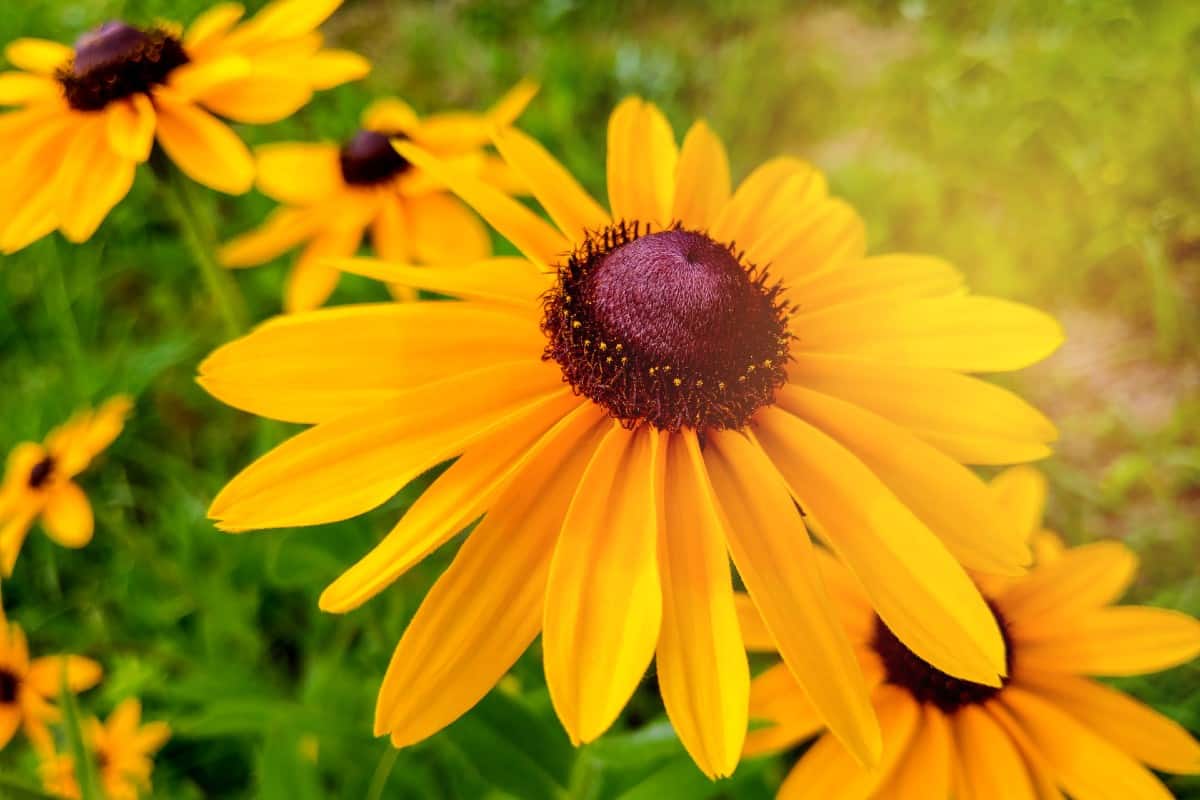
Black-Eyed Susan adds color and warmth to your flower garden while attracting butterflies, ladybugs, and other pollinators. The name comes from the brown/purplish spot located in the center of each flower head.
A member of the sunflower family, these beauties reach up top three feet tall and bloom from June through October.
One of the greatest things about Black-Eyed Susan is how easy they are to grow and care for – very little maintenance is required. These plants do grow in part shade but love full sun. They survive a variety of conditions but require fertile soil.
Best Perennials that Attract Butterflies – Zinnias (Zinnia elegans)
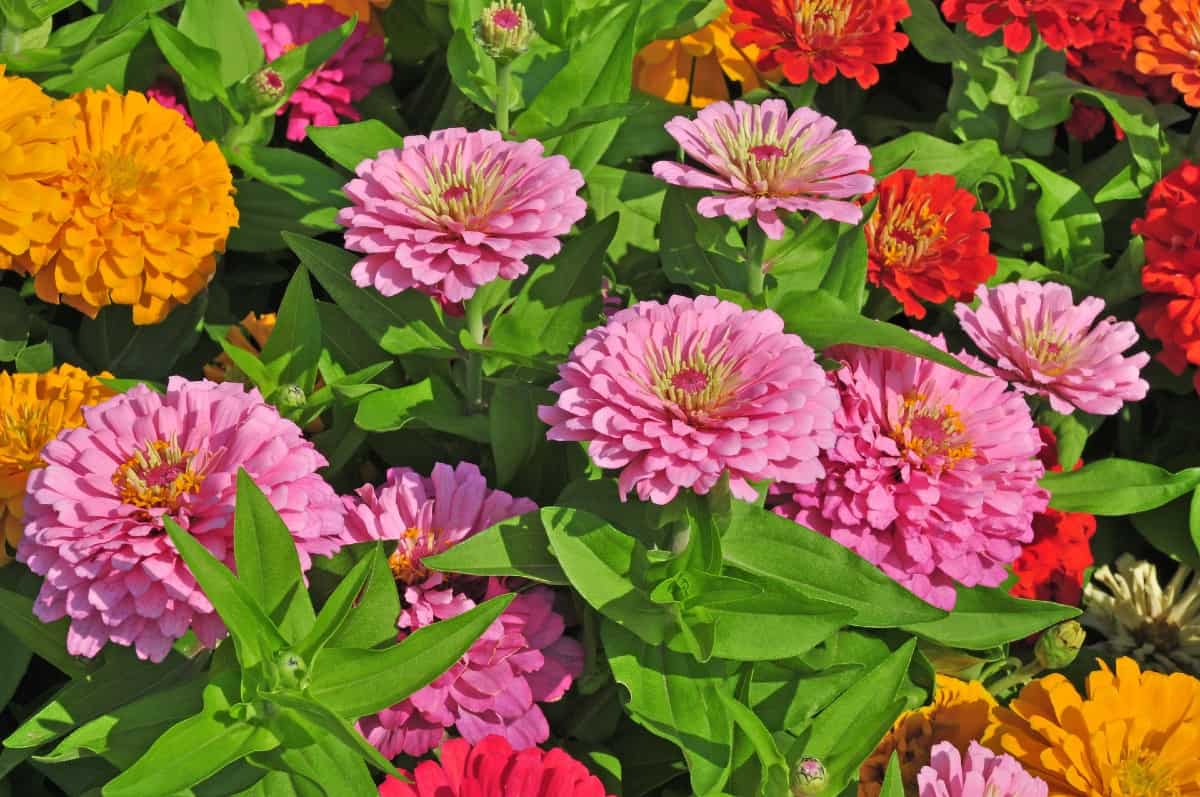
What makes Zinnias so attractive to butterflies and other pollinating insects is the single flower heads that bear a striking resemblance to daisies. The flower, which comes in a wide range of colors, sits on top of a green stem and works well as cut flowers.
When planting Zinnias, know they do better when grown from seed rather than when transplanted. Never plant your seeds until after the last frost passes and plant new seeds every two weeks to extend the blooming season.
Blazing Stars (Liatris)
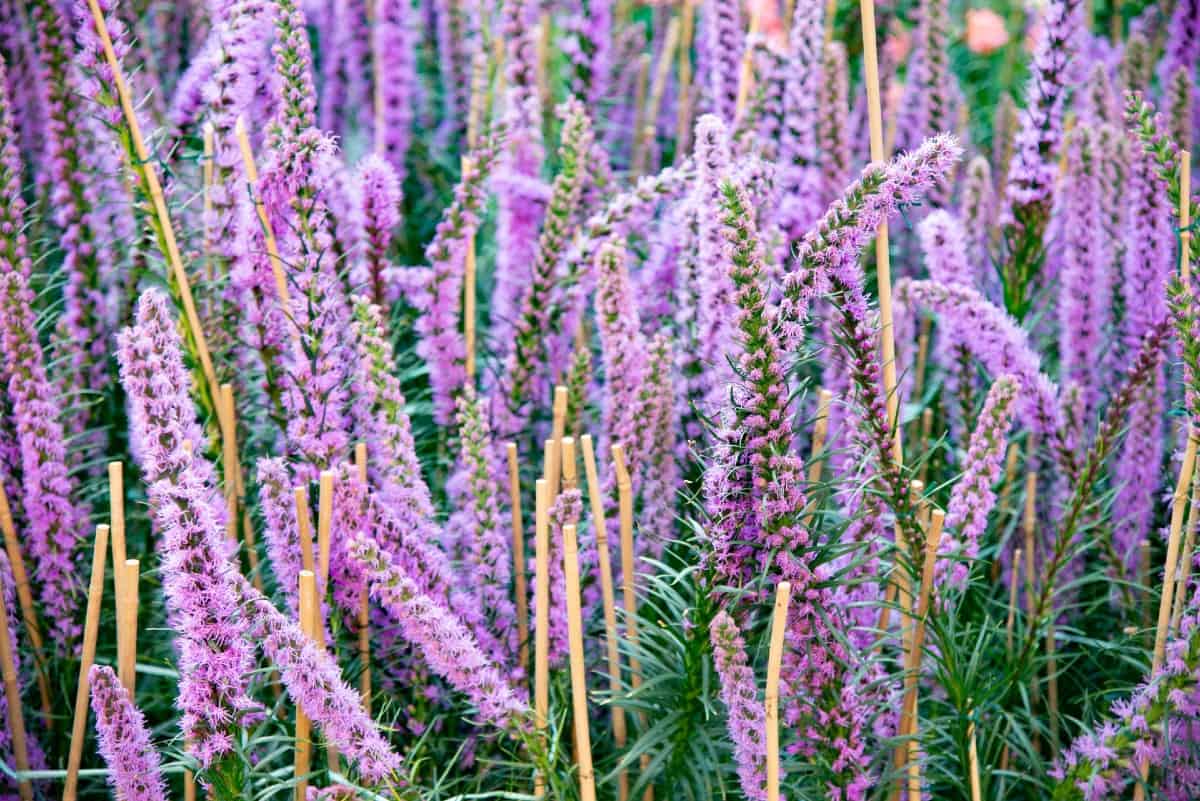
Blazing Stars are easy to grow just about anywhere you plant them. The plants grow up to five feet tall and feature grass-like leaves with flowers at the top of tall spikes.
The purple blossoms are thistle-like and bloom from the top down, and foliage stays green until fall, turning a bronze color. These beauties prefer full sun but can adapt to some shade.
They are both drought and cold hardy and adapt to a variety of soil conditions. In addition to attracting butterflies like the Swallowtail, the cut flowers work well in vases throughout the home.
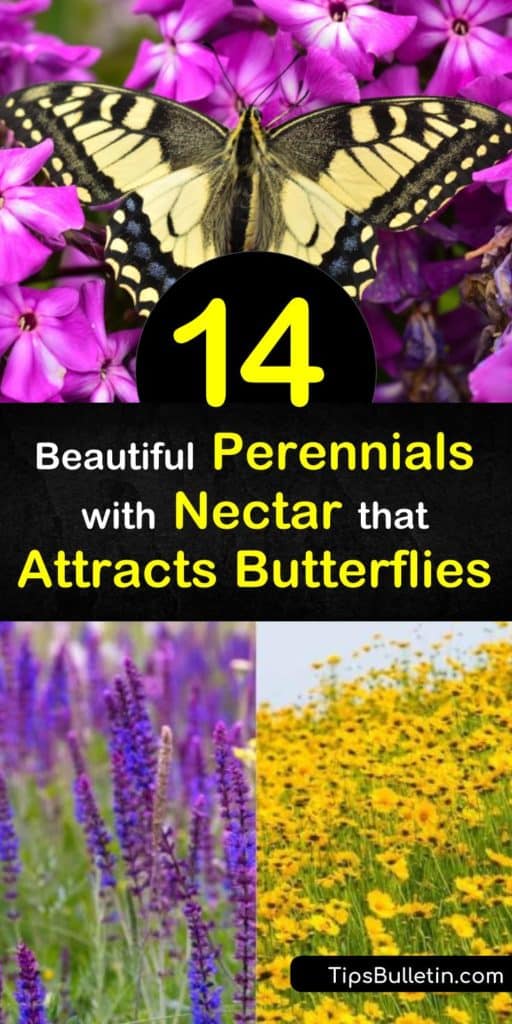
Thank you for reading our thoughts on the best perennials to attract butterflies. If you found any of our opinions on the best nectar plants helpful, please share our ideas on perennials that attract butterflies with others on Facebook and Pinterest.